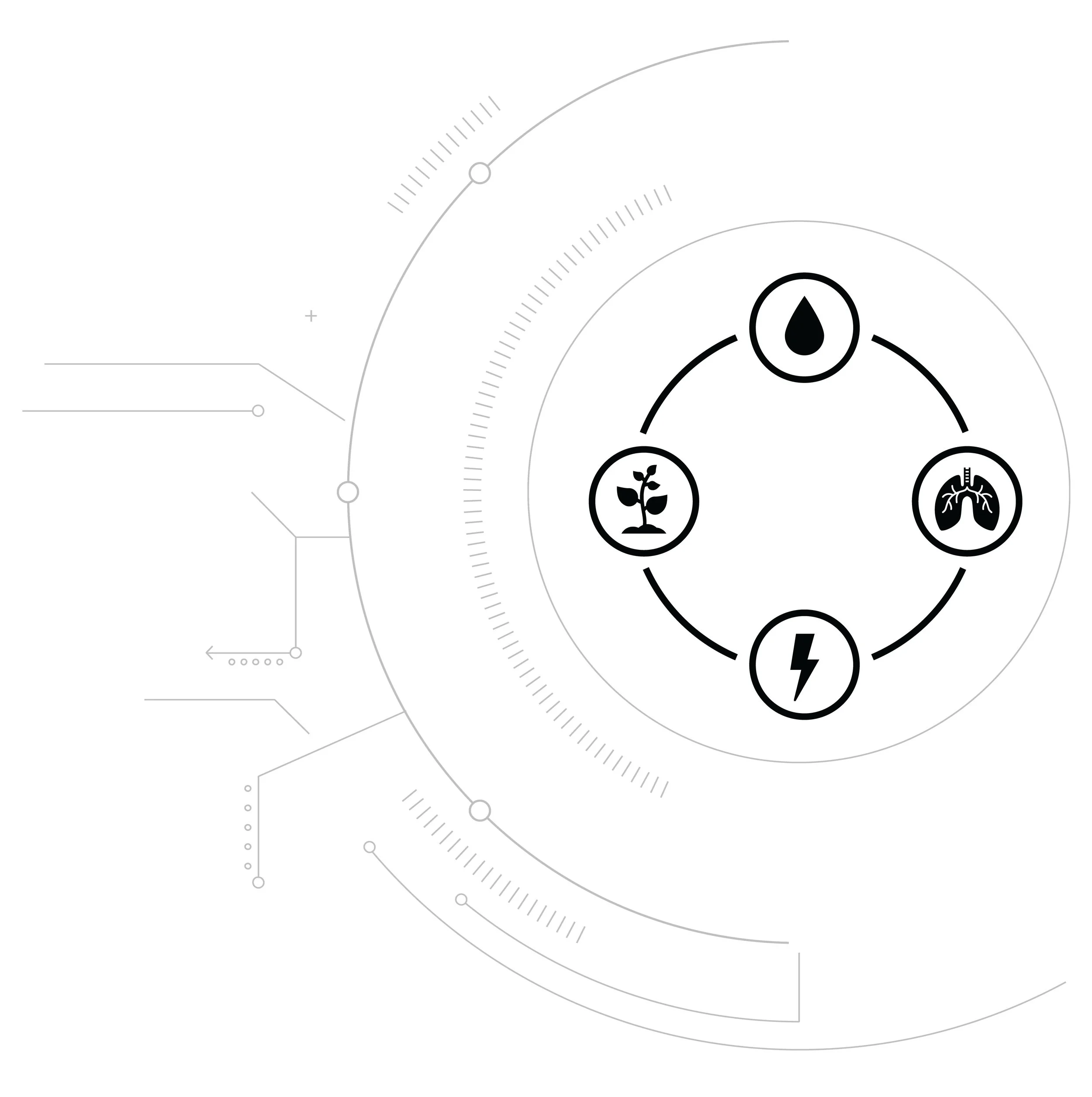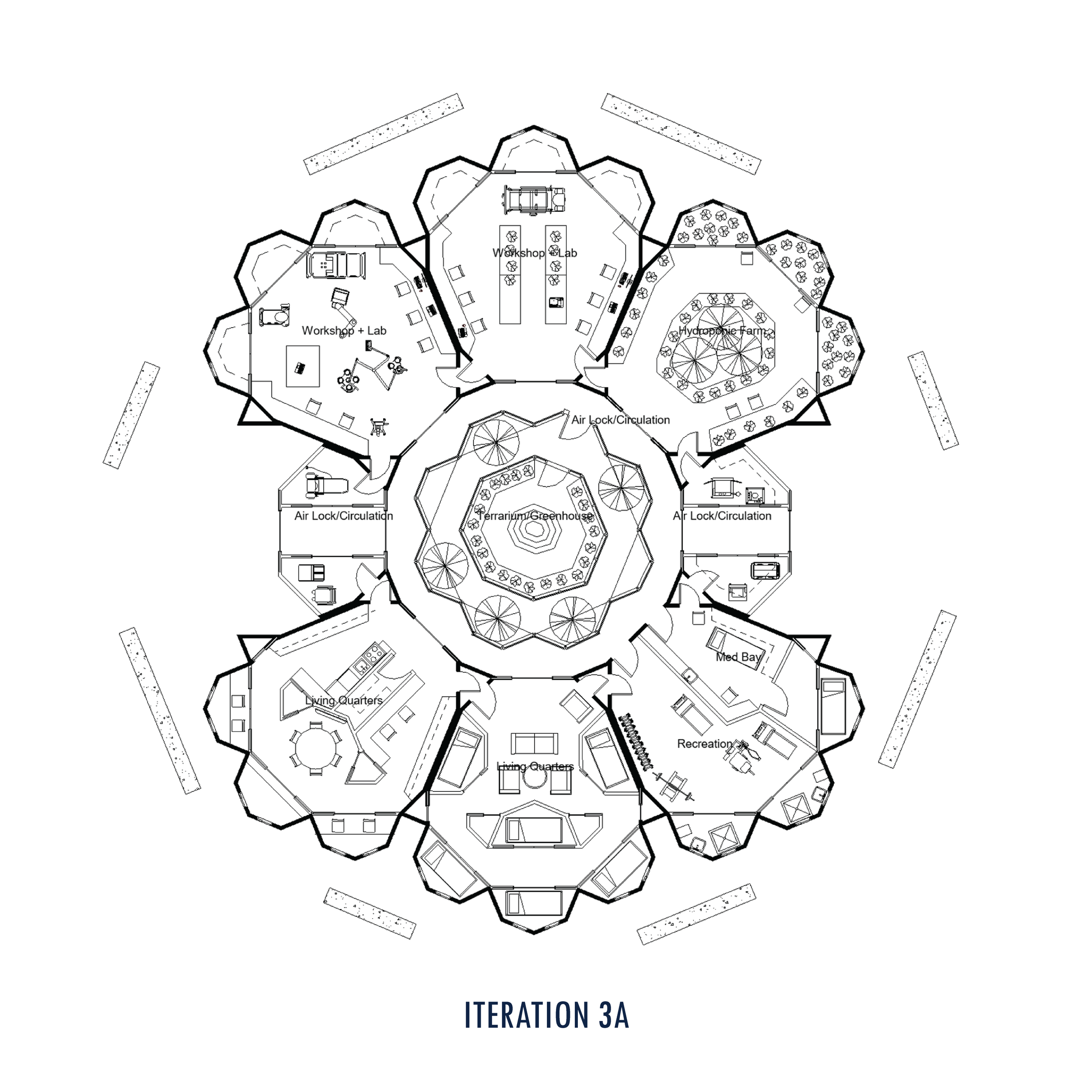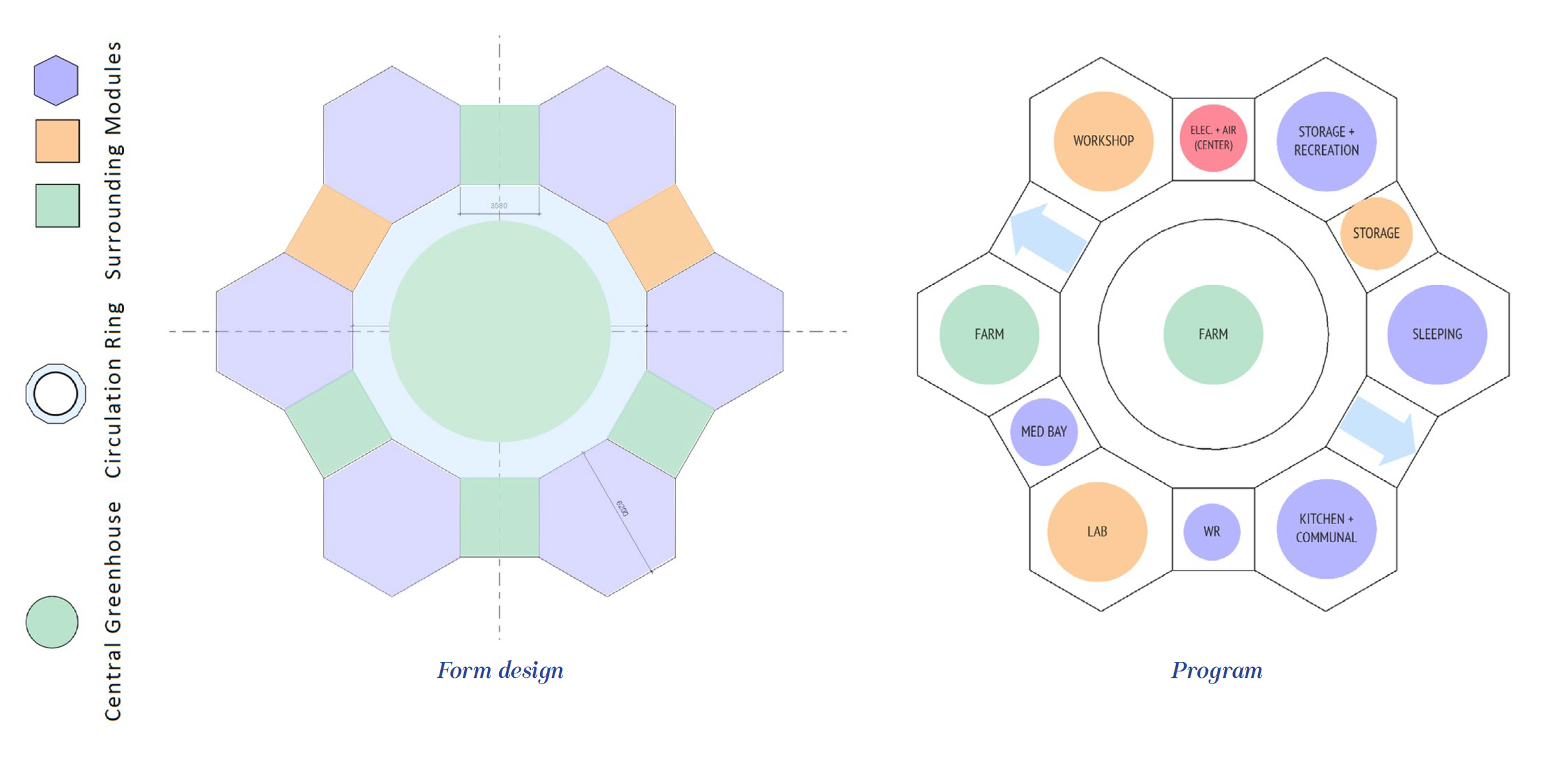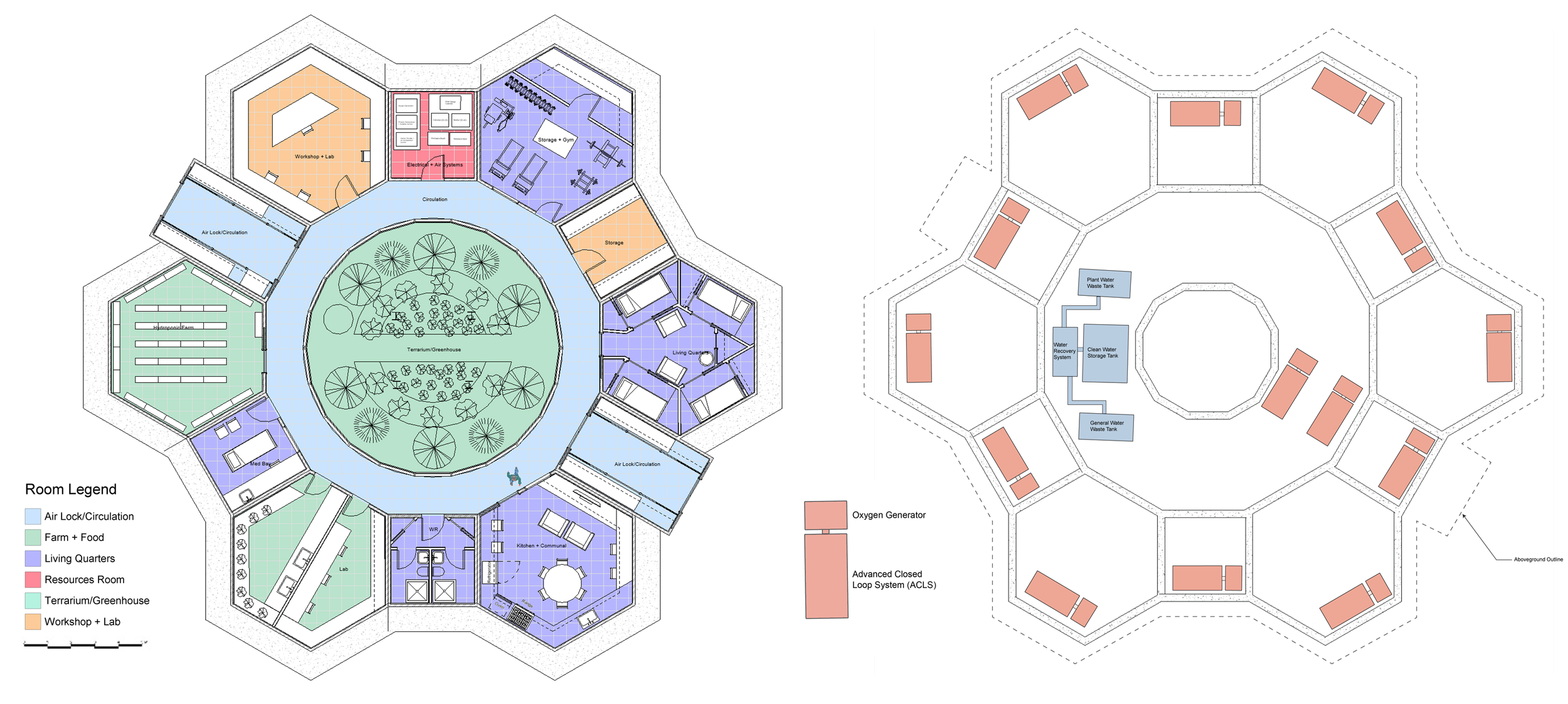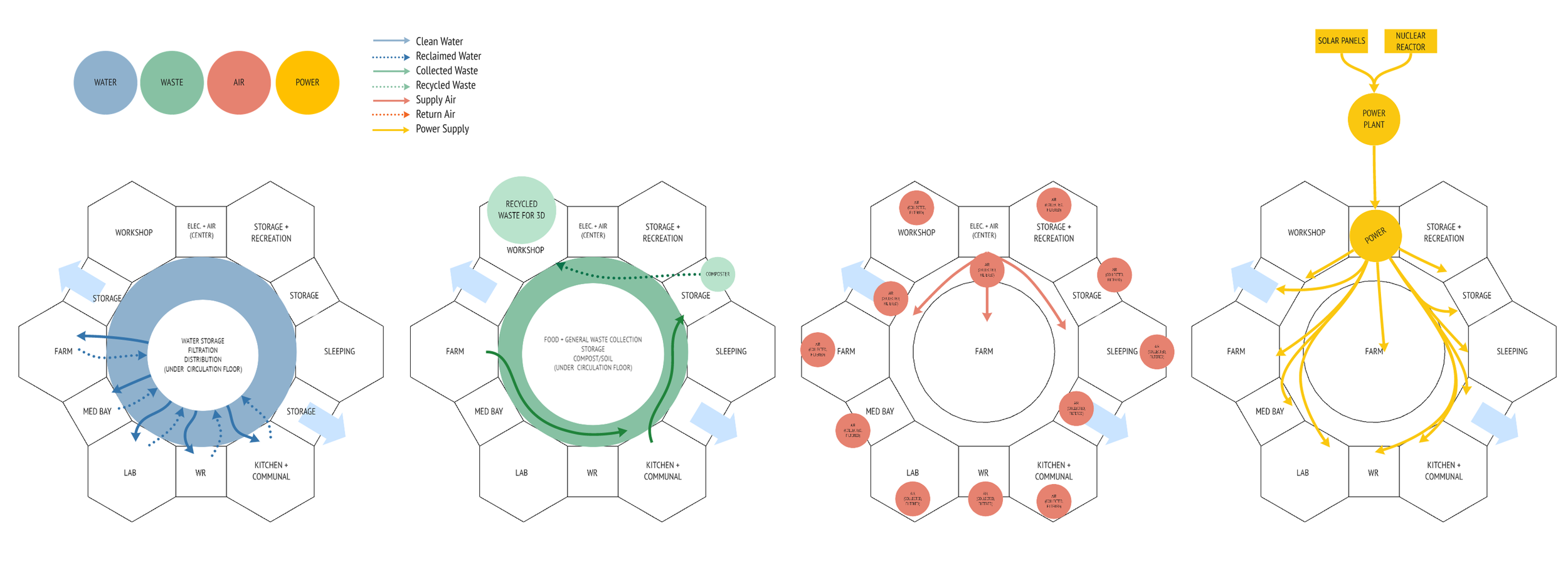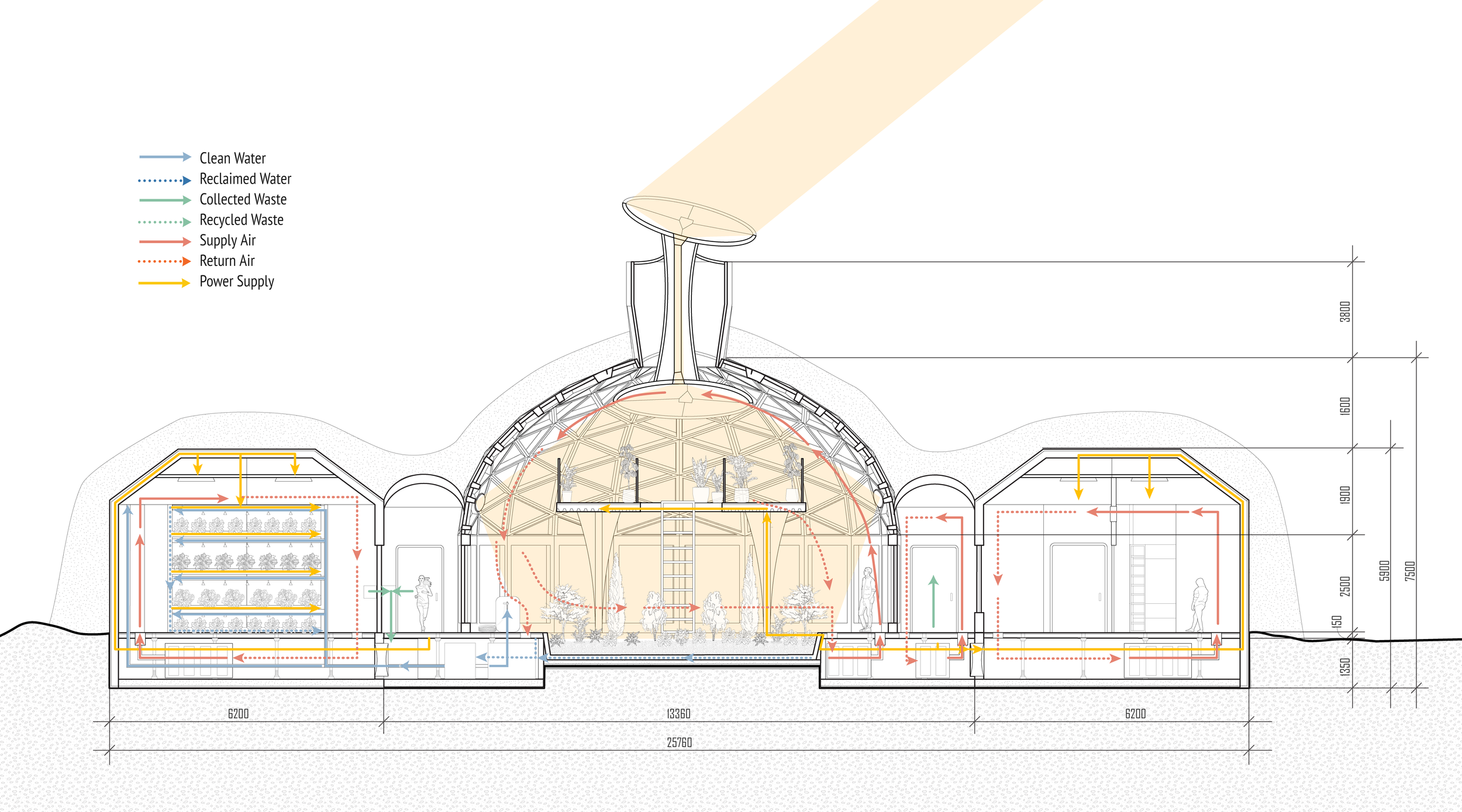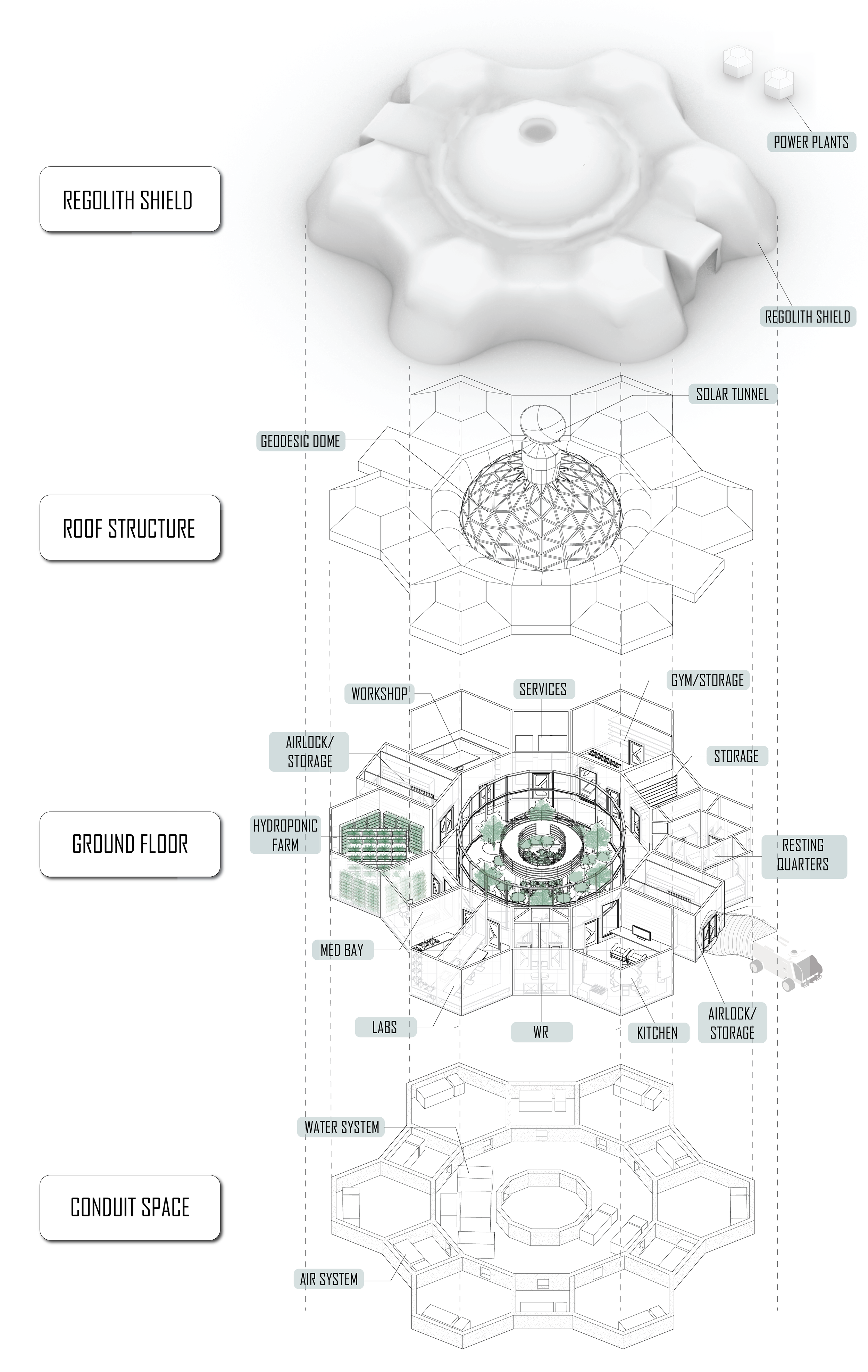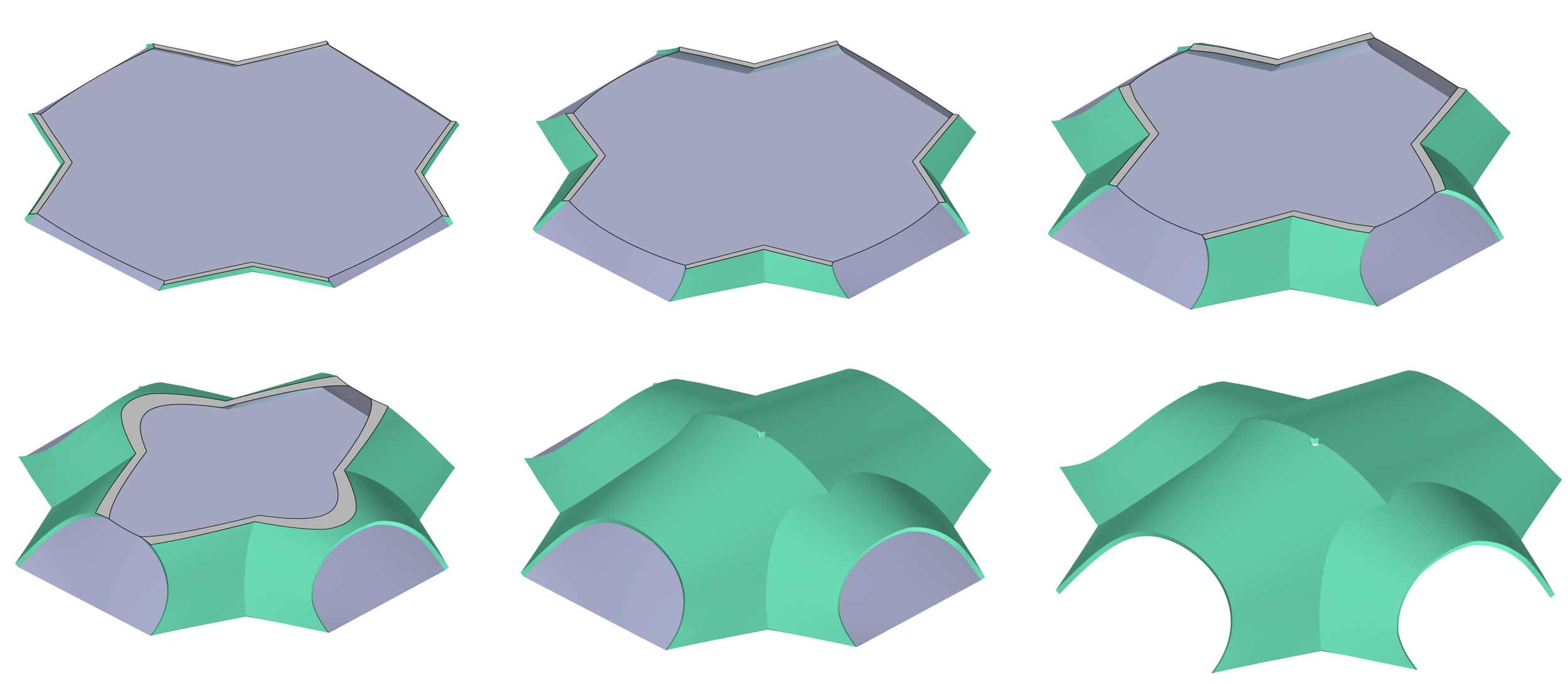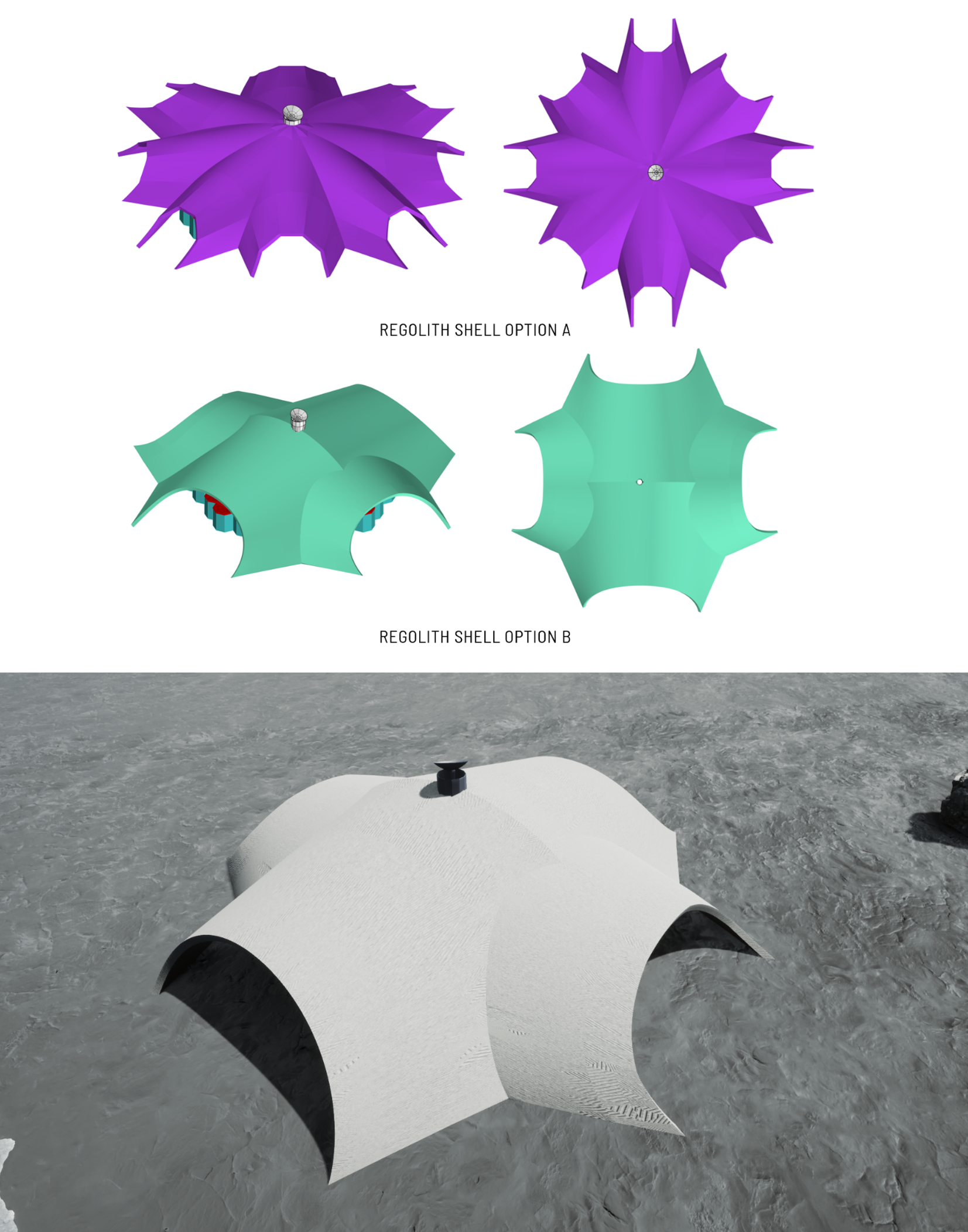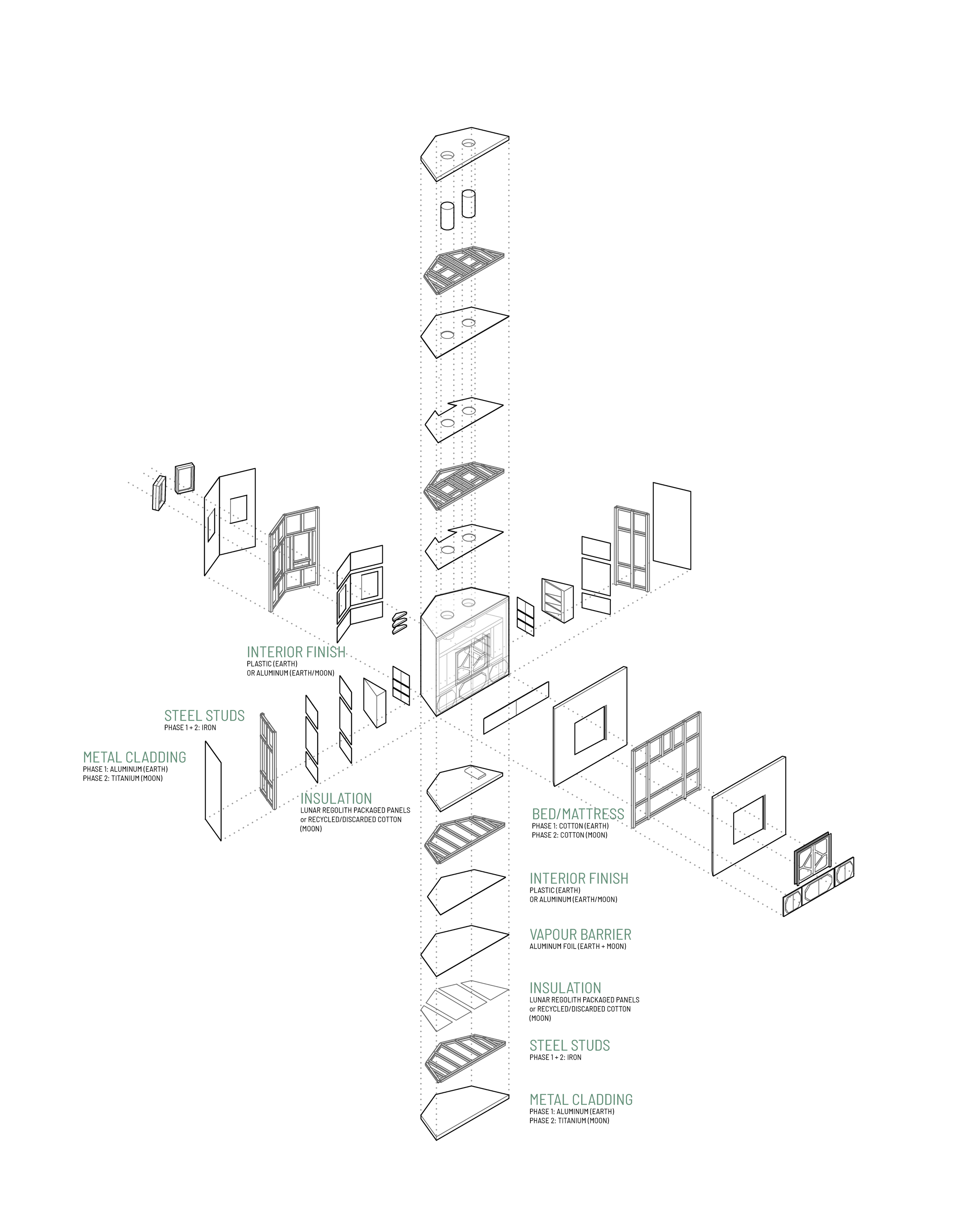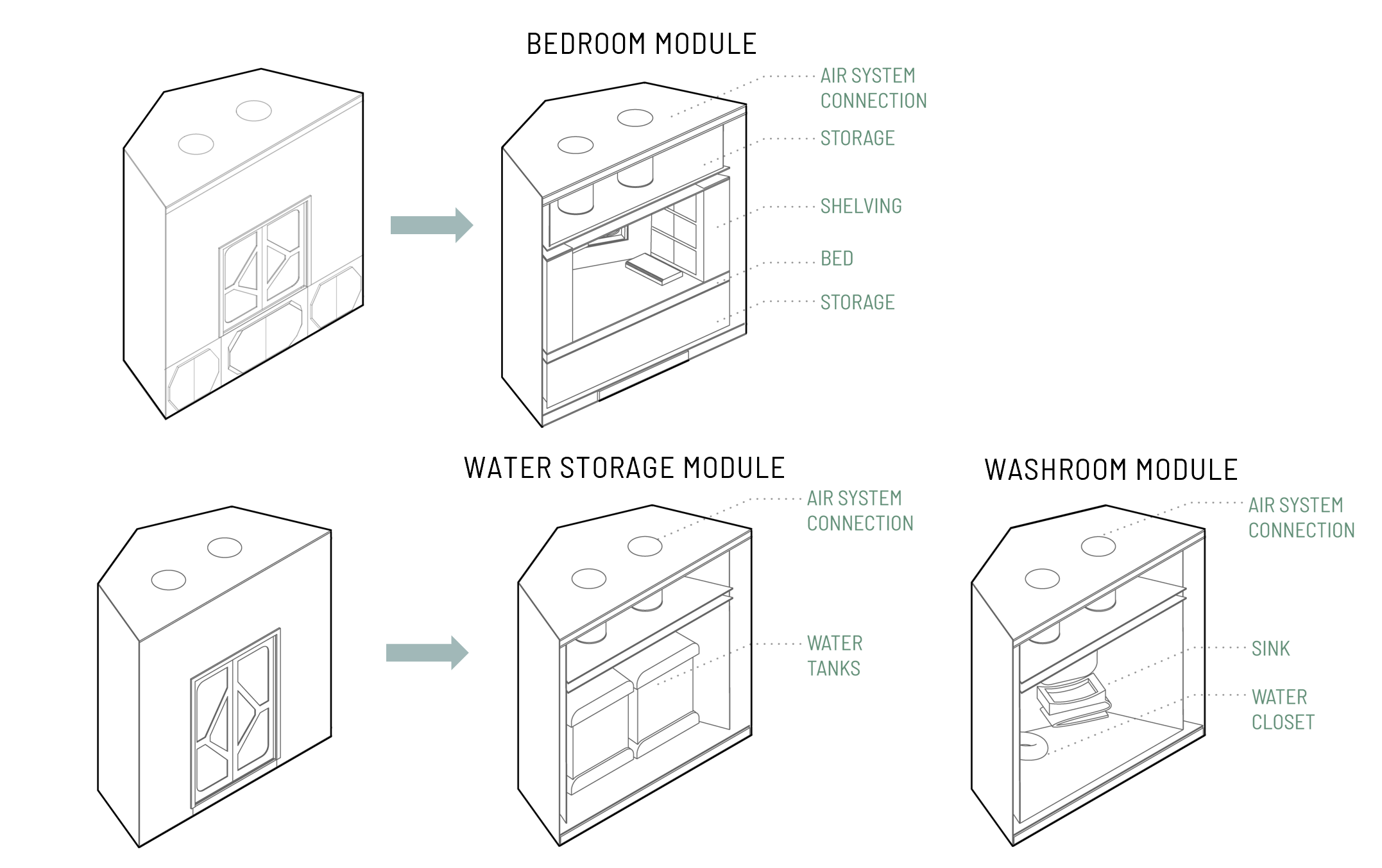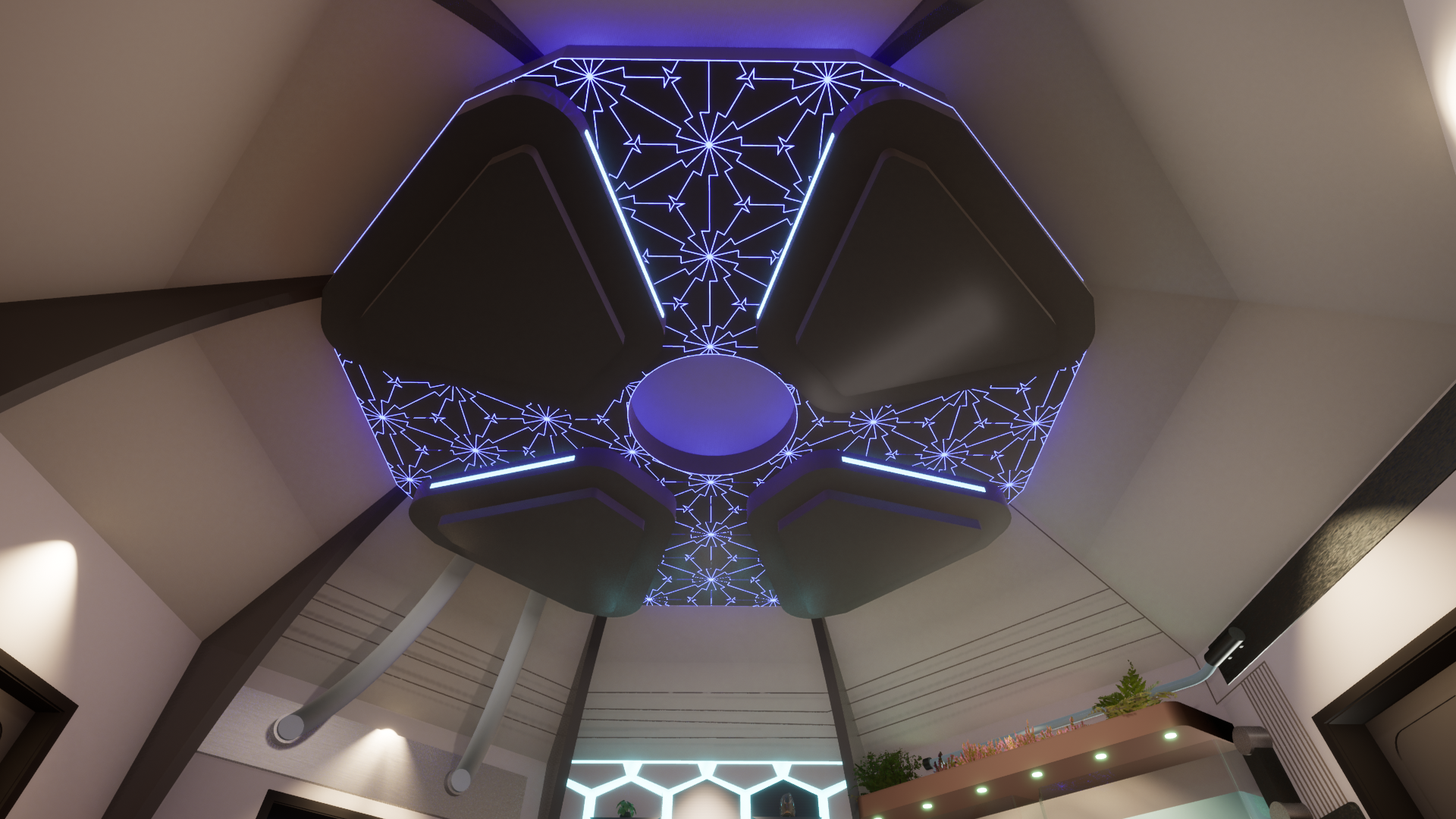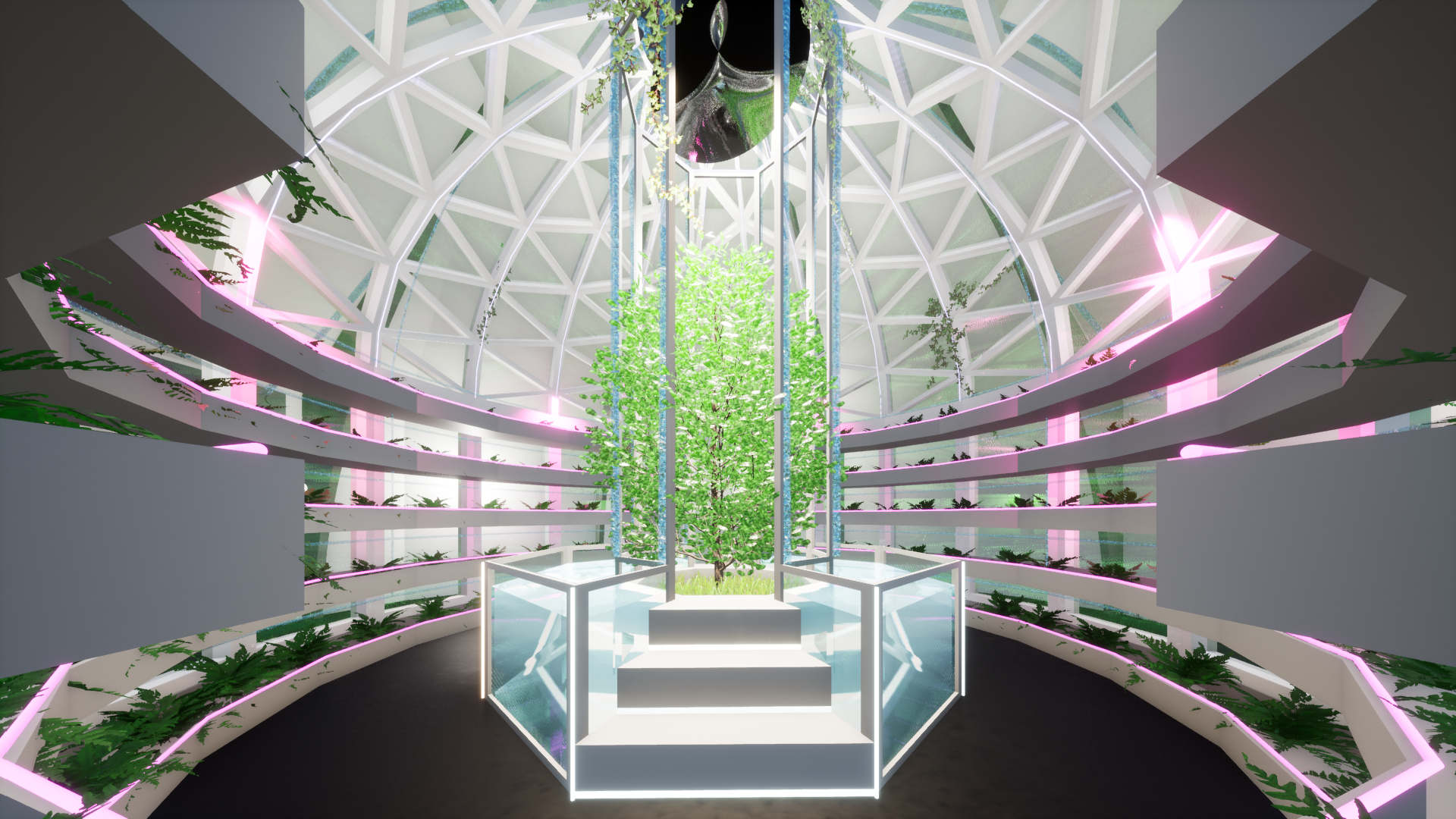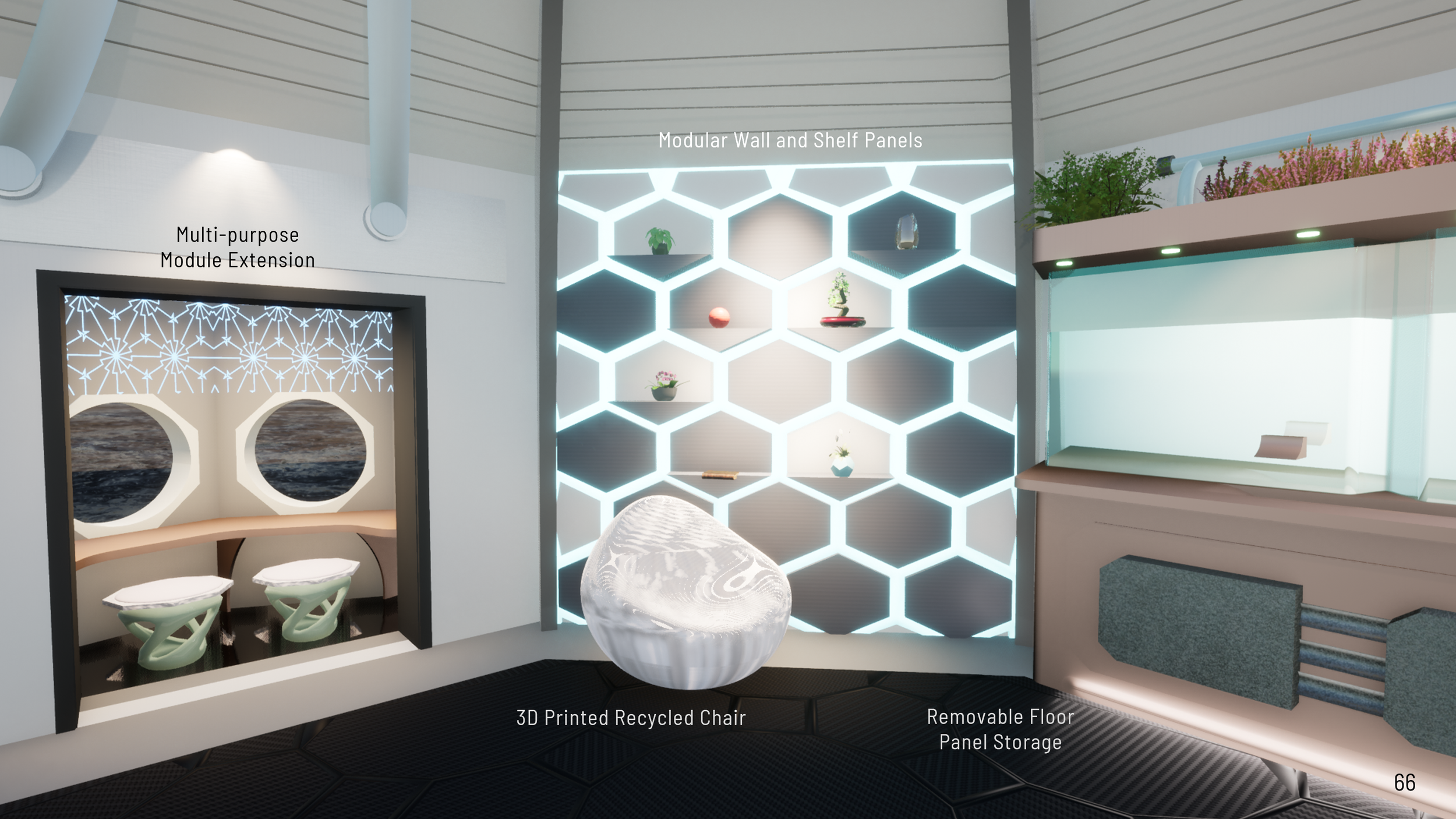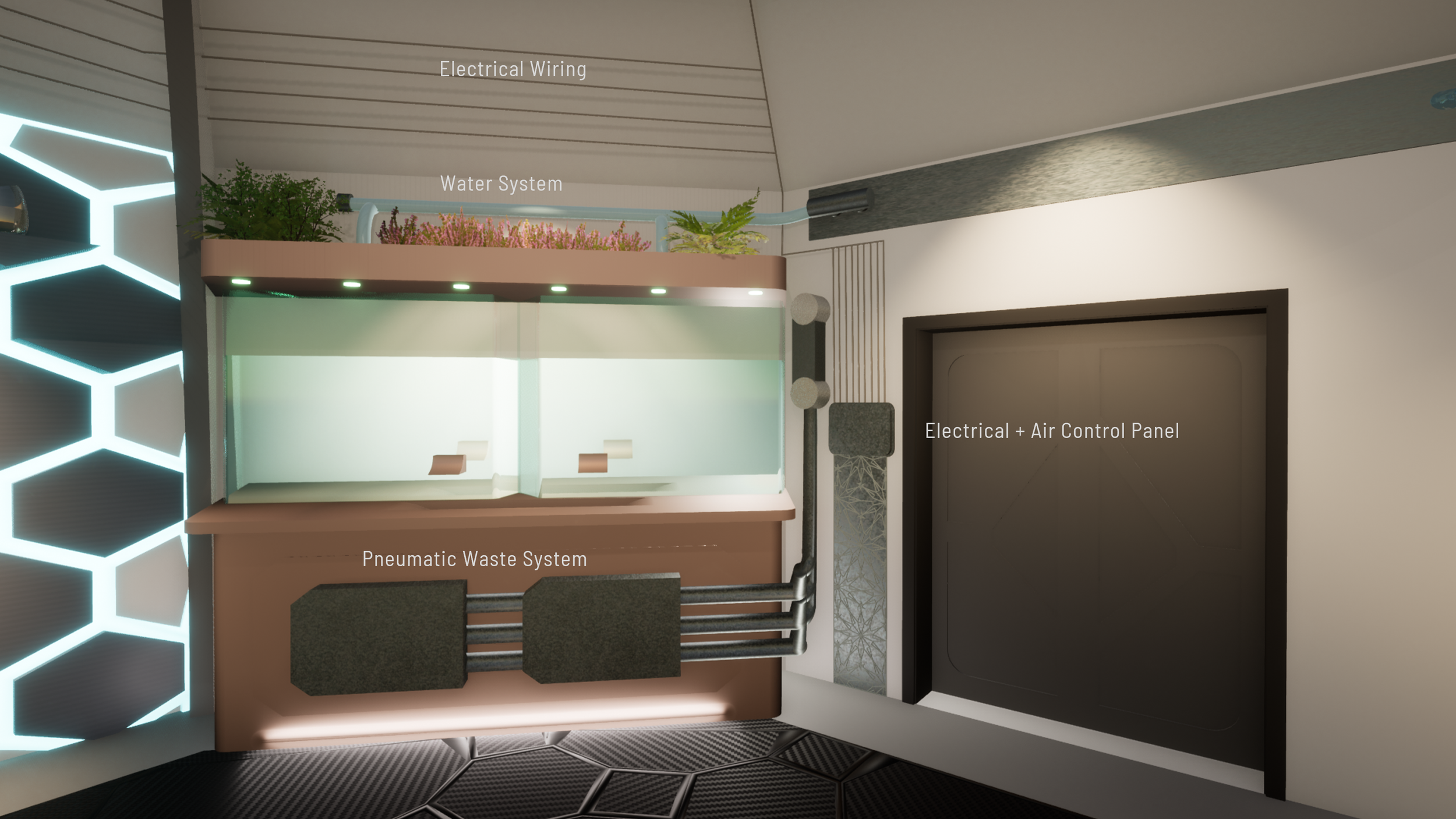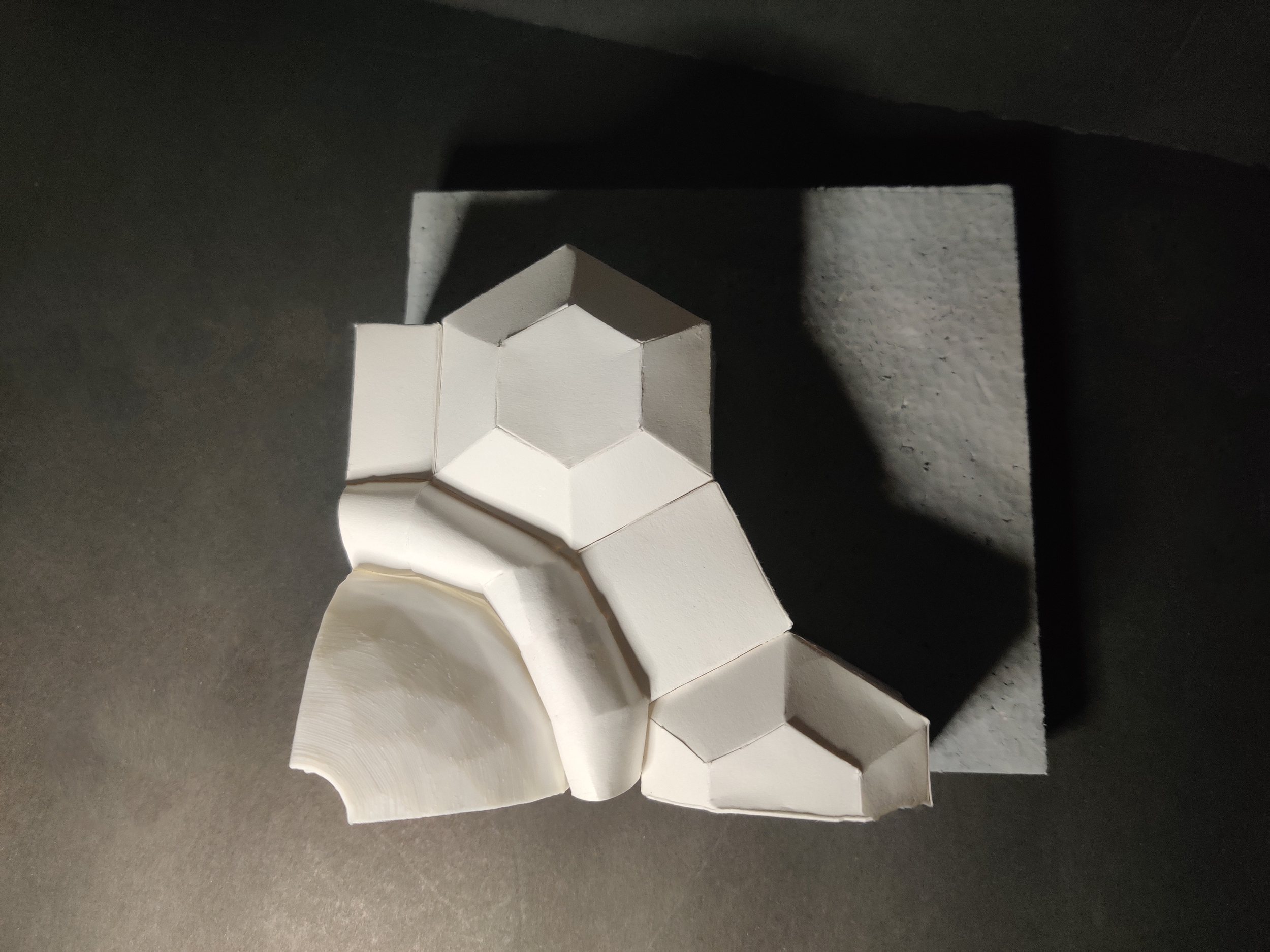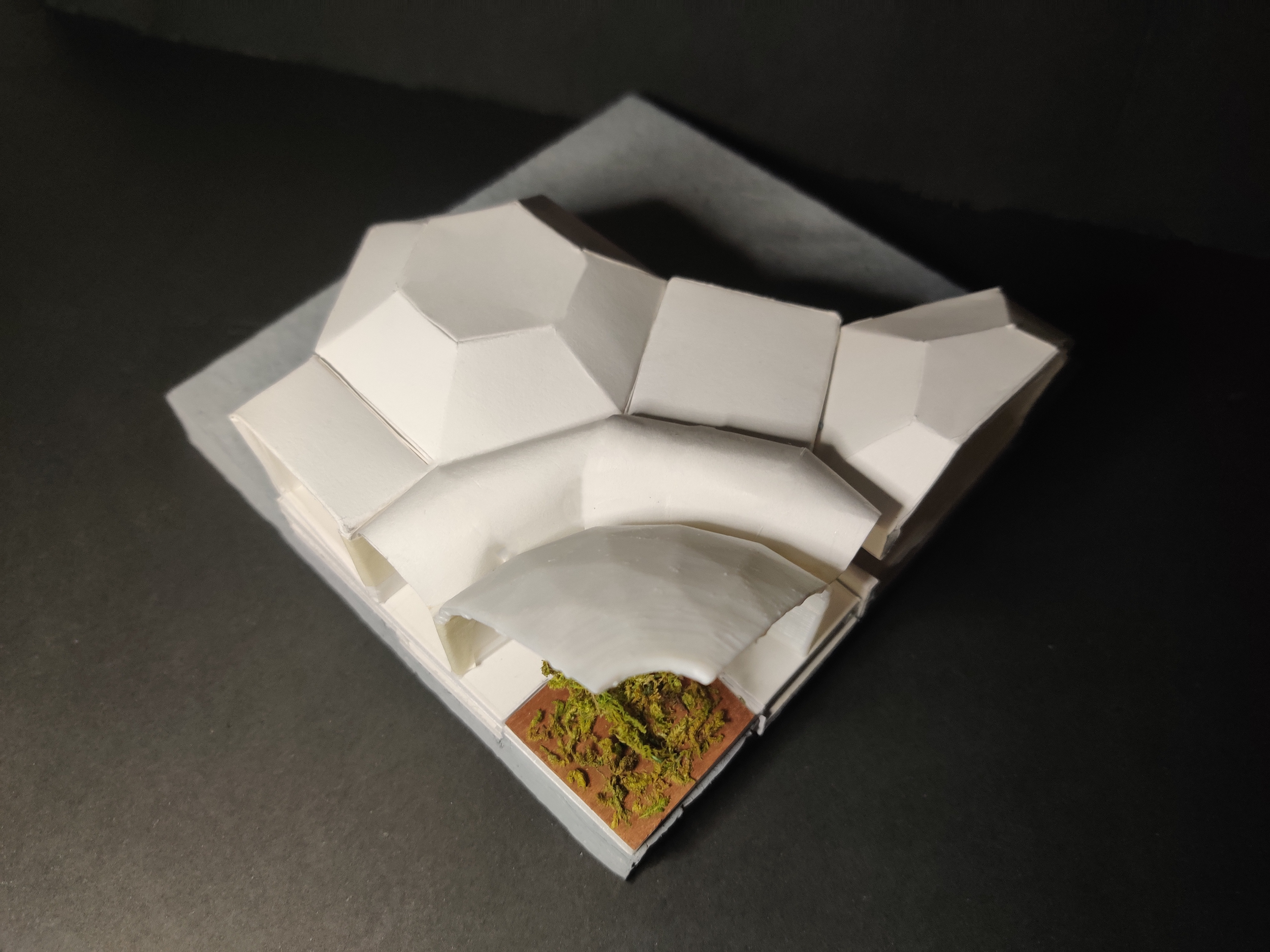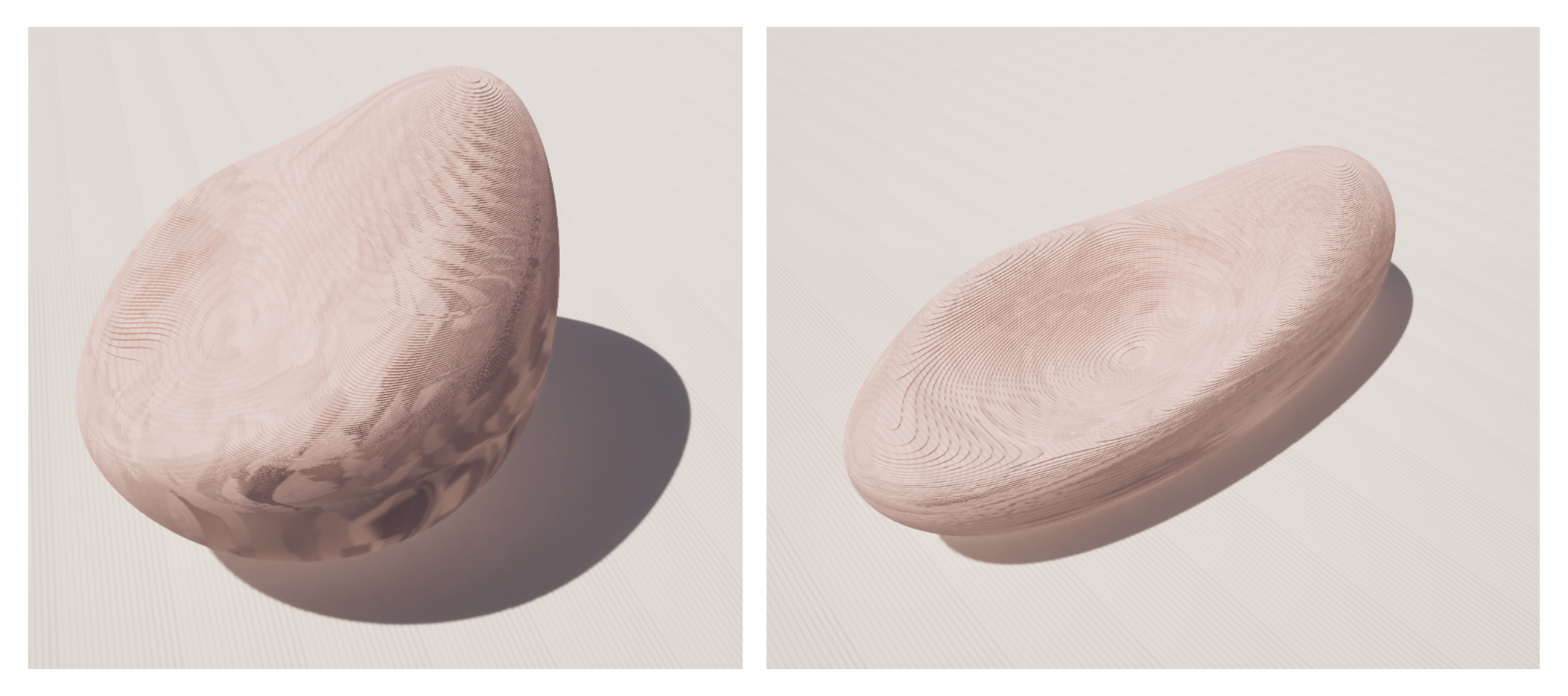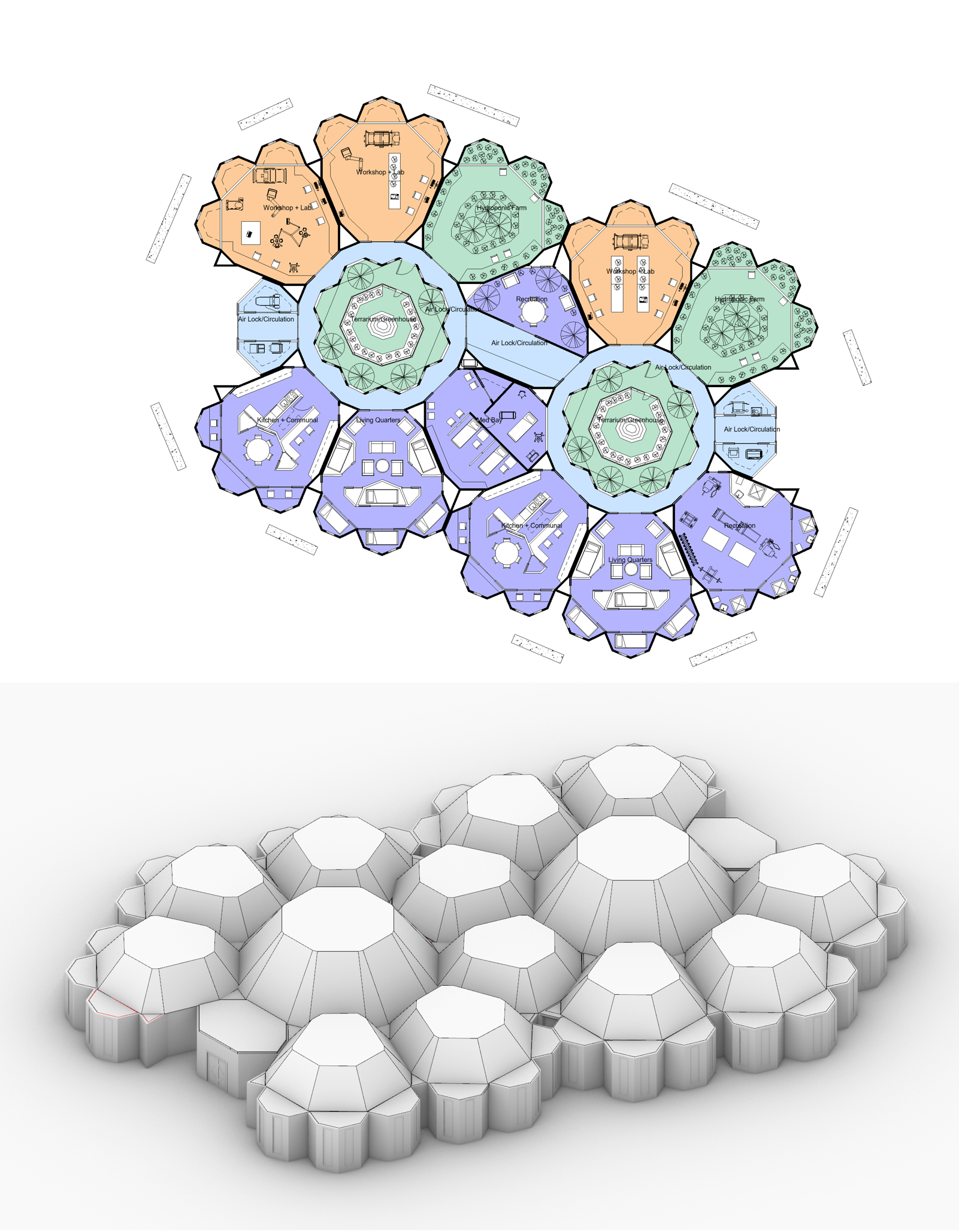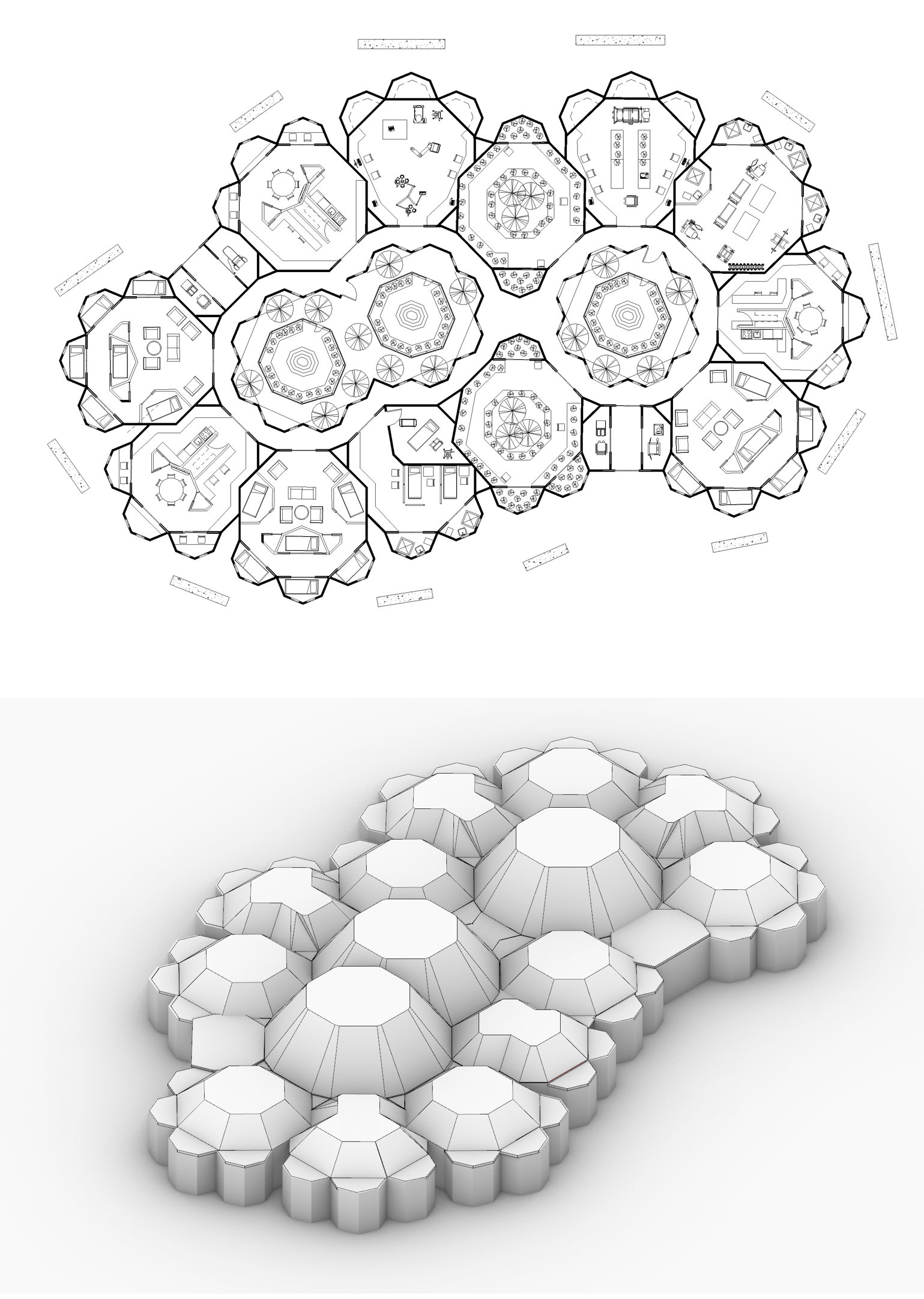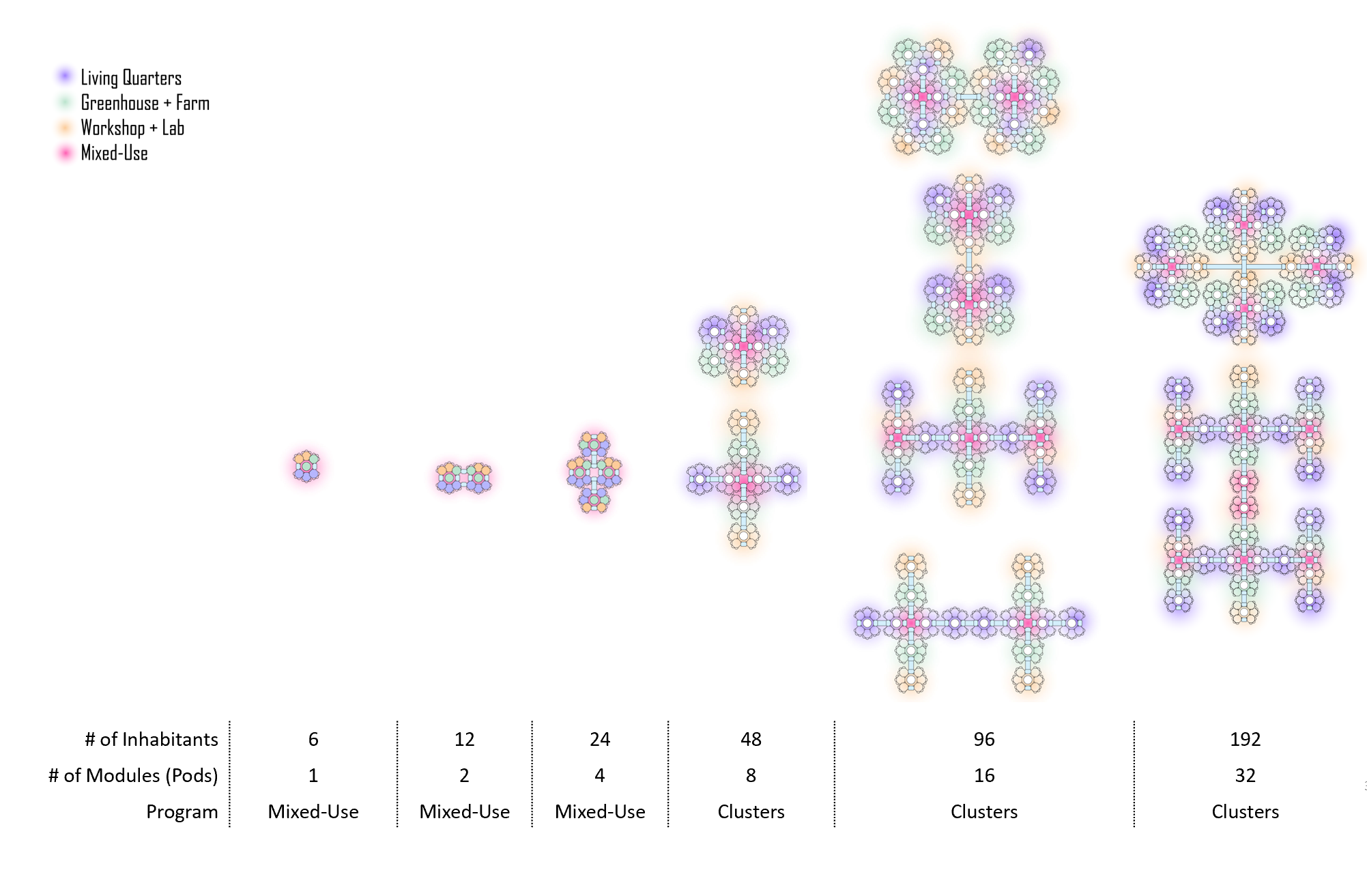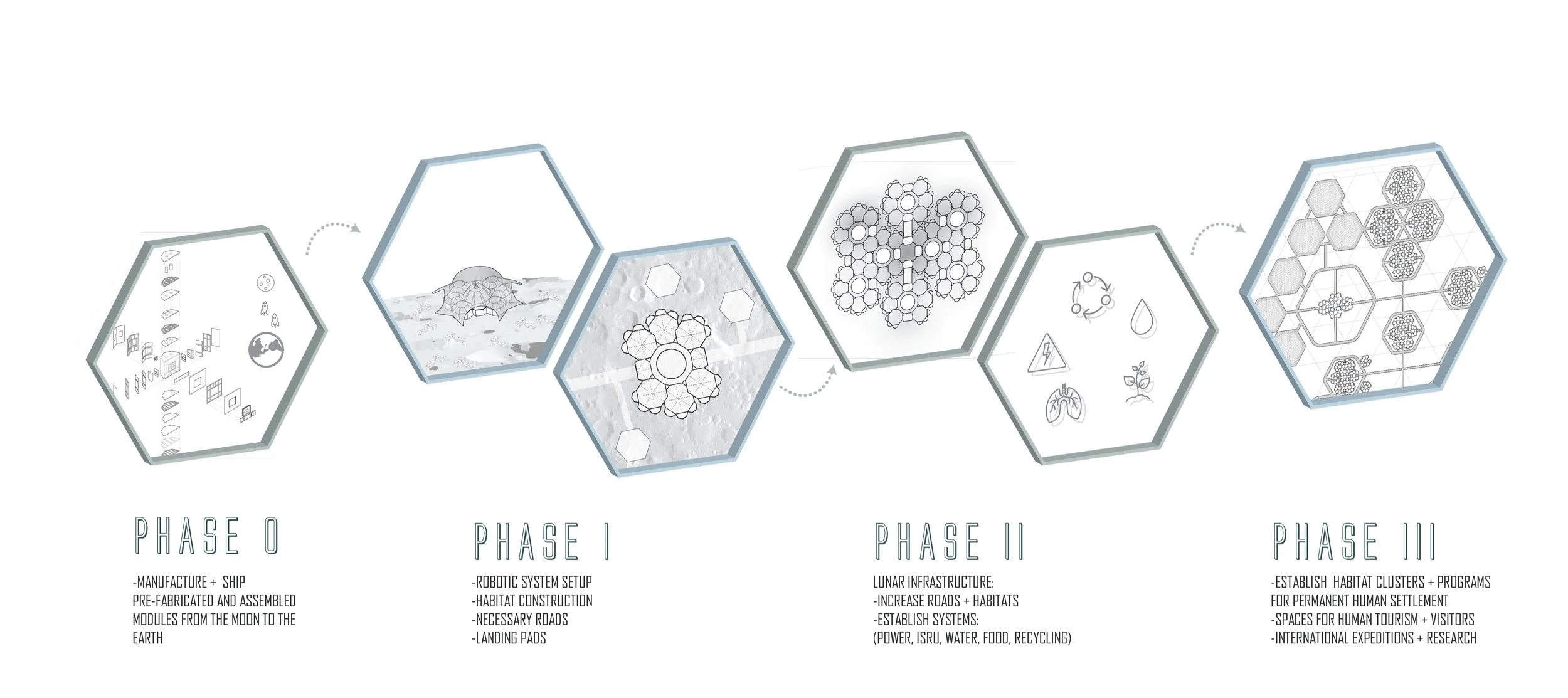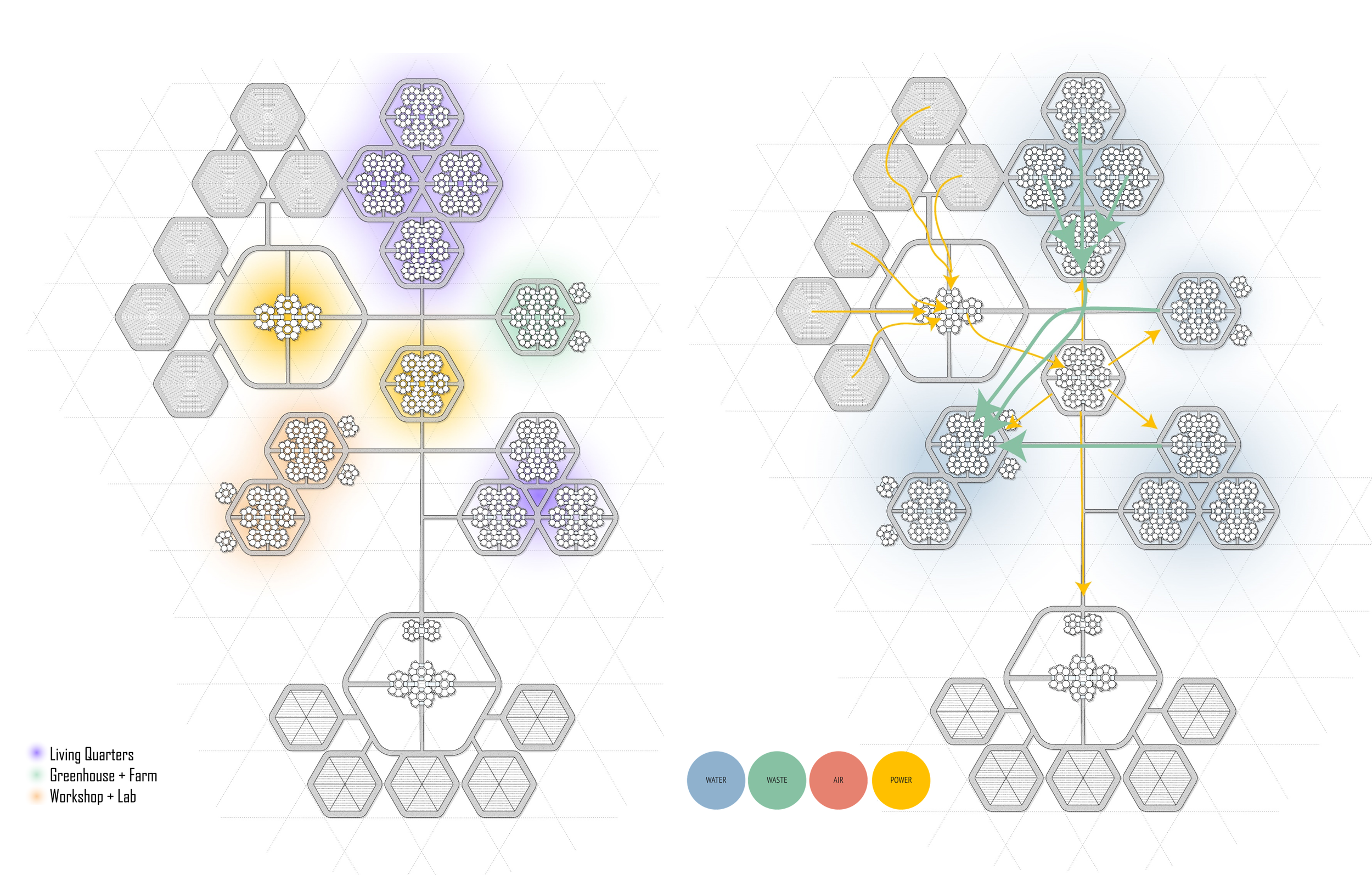Earth’s deteriorating health has been largely caused by the exploitation of its resources, improper waste disposal, and linear economy practices. Decades of space exploration has led to the prospect of establishing life on the Moon which will require the development of resilient systems different from practices on Earth. This project aims to create a self-sustaining lunar habitat for human life and to identify sustainable closed-loop processes for: life support systems, resources, and materials. From there, these paradigms and designs could be implemented back to Earth to deal with the haphazard methods of waste disposal and to achieve a circular economy.
For my thesis project, I designed a framework and a set of guidelines for constructing a self-sustaining habitat and community on the Moon with various iterations to demonstrate the applications. The title Lunarium was inspired by the intention of designing a contained terrarium in space which would provide basic human needs for survival.
SUSTAINABILITY FRAMEWORK
Through the analysis of the sustainable concepts, it is hypothesized that sustainable lunar habitats can be designed through the application of the following sustainable factors: modular components (repairability), adaptability (disassembly and re-assembly), closed-loop cycles (circular economy), and flows of systems.
DESIGN ITERATIONS
To test the hypothesis, multiple iterations of a habitat were designed through the application of the sustainable factors. Modular components informed the overall design layouts and forms of the various iterations. The layout grids were designed with modular connections and components in mind for potential growth and evolution of the habitat.
Flow Chart of required features and components for constructing a sustainable lunar habitat
Materials and Resources Cycles
For the first design proposal, it began with creating a form from the use of 4 basic components: a center greenhouse, circulation ring, surrounding living and working modules, and the systems and services. The first module iteration - at its basic initial form - contains a dodecagon at the center, connected to squares and hexagons. The components can be flexible in its orientation and adjacencies to create different forms for future generations of the habitat. It is designed with the intention for these modules to allow for easy connections, to be repeated, and to be easily replaced or repaired.
DESIGN PROPOSALS // ITERATION 1
Iteration 1 - Form design and program schematic diagrams
Iteration 1 first floor plan and conduit space floor plan
Systems schematic diagram
Building Section
Exploded Isometric
DESIGN PROPOSALS // ITERATION 2, 3A, 3B
SUSTAINABLE FEATURES + COMPONENTS
Potential construction method for building the regolith shell
Regolith shell forms
Exploded isometric drawing of the extension module
Extension Module Variations
Module Ceiling - Air System
Center Greenhouse
Modular Components and Systems
Modular Components and Systems
Physical Model of Lunar Habitat without the shell
Partial Section View of the Physical Model
Partial Section View of the Physical Model
3D-printed Chairs made from recycled materials
3D-printed Tables made from recycled materials
As a part of the growth and evolution of the lunar habitat city, this includes the growth and expansions of a single module into 2 or more. The images show the floor plans of the habitats and the 3D forms of the modules. Additionally, the diagram shows the growth possibilities of the lunar community. The initial habitats would be mixed-use programs and as time goes on, the habitats can start to separate into different designated clusters.
GROWTH + EVOLUTION // PHASES
Expansion of habitat
Growth of Habitat
Phase III of Lunar Habitat Development
Lunar Habitat Development Overview
Phase III - Lunar Habitat City Systems
The diagrams demonstrate a potential interpretation of a growing sustainable lunar community or city. Prior to constructing and developing on the Moon, there will need to be preparation done on Earth in Phase 0. Phase I focuses on the construction of the first lunar habitat module while Phases II and III continue the development and construction of the sustainable lunar city. It also includes programs for permanent human settlement, spaces for human tourism and visitors, and areas for international expeditions and research.



